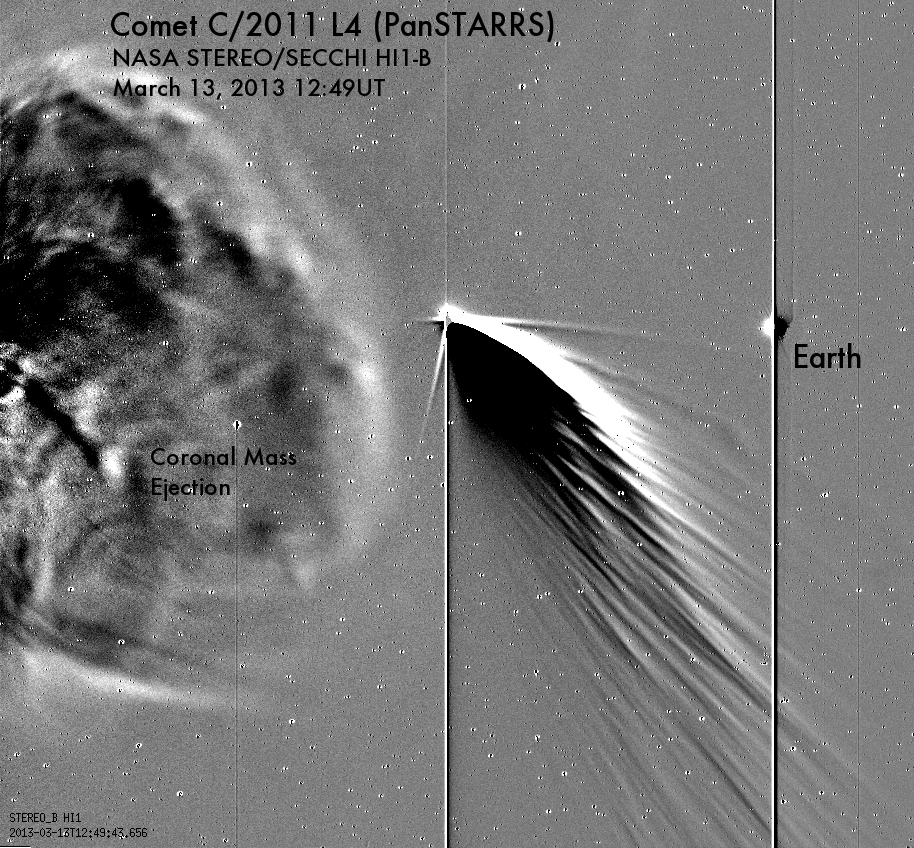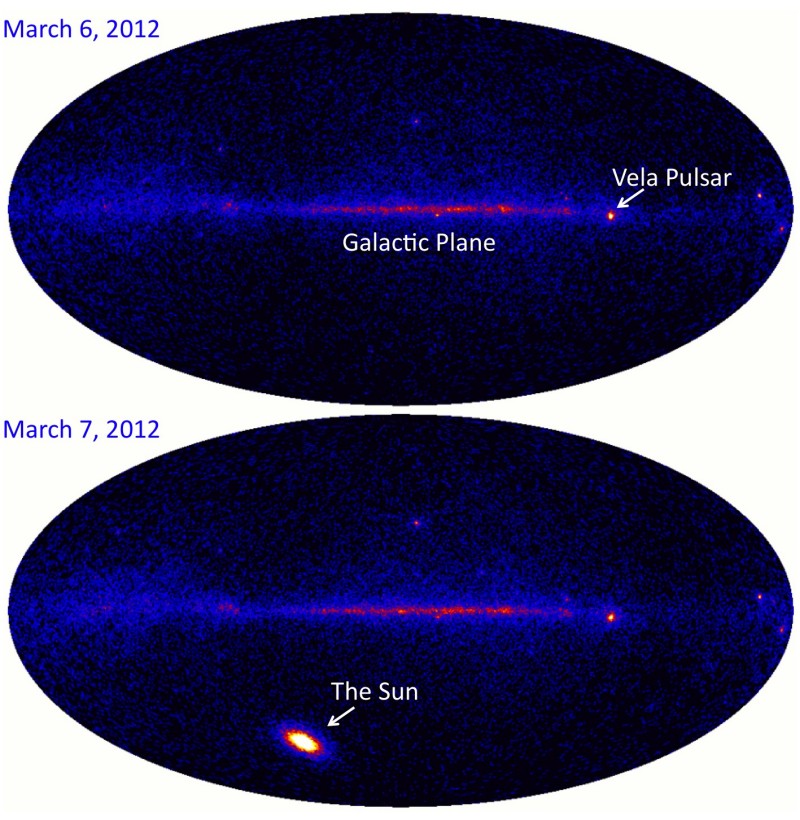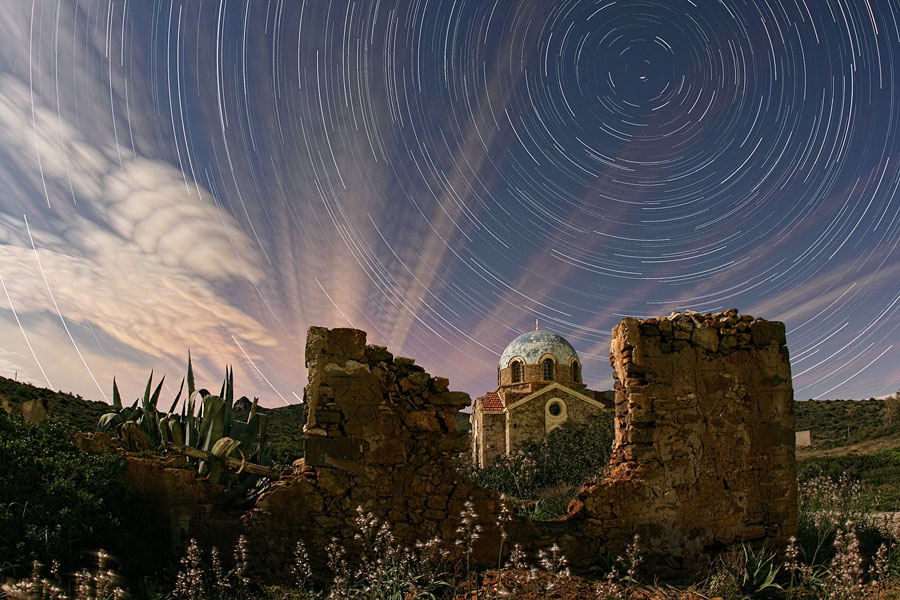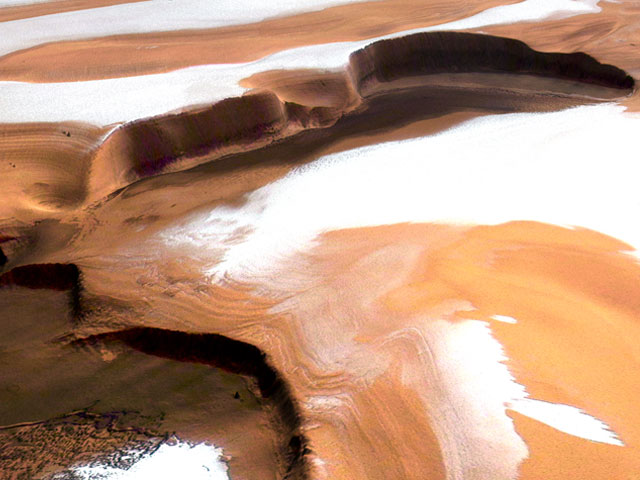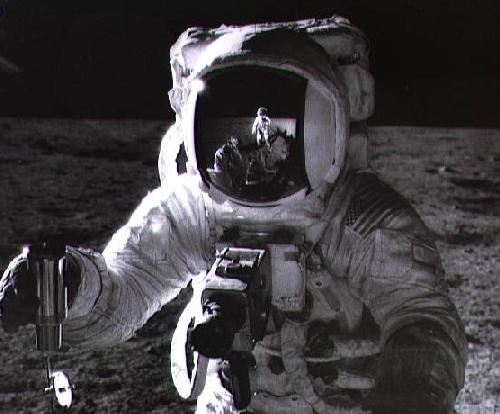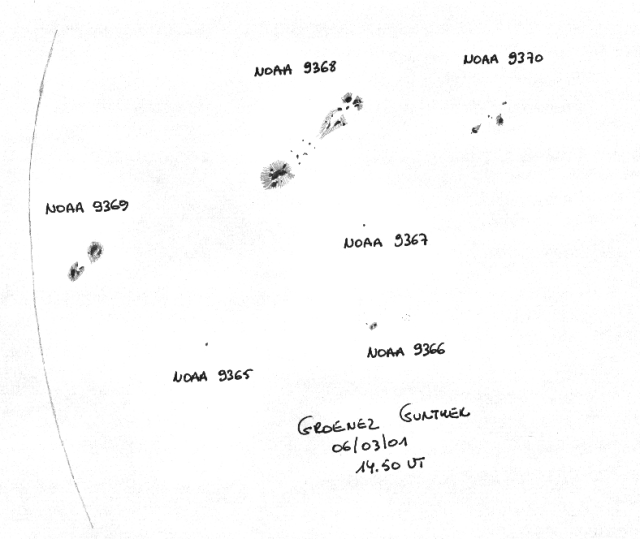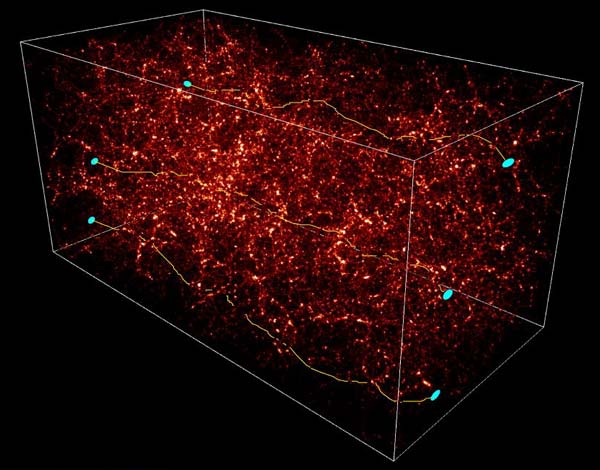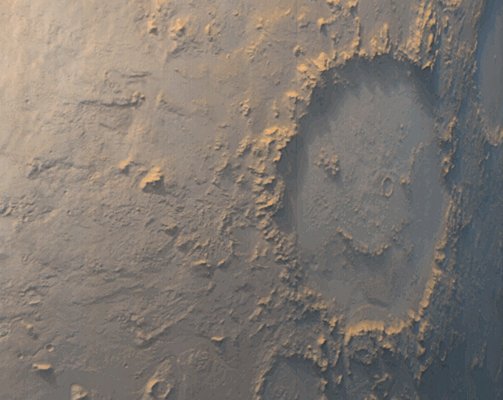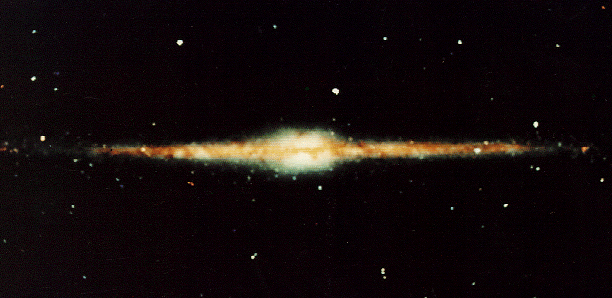APOD Retrospective: March 15
Posted: Thu Mar 15, 2012 3:12 am
| << Previous | Index | Next >> |
2015 Would you go to the end of the world to see a total eclipse of the Sun? If you did, would you be surprised to find someone else there already? In 2003, the Sun, the Moon, Antarctica, and two photographers all lined up in Antarctica during an unusual total solar eclipse. Even given the extreme location, a group of enthusiastic eclipse chasers ventured near the bottom of the world to experience the surreal momentary disappearance of the Sun behind the Moon. One of the treasures collected was the above picture -- a composite of four separate images digitally combined to realistically simulate how the adaptive human eye saw the eclipse. As the image was taken, both the Moon and the Sun peeked together over an Antarctic ridge. In the sudden darkness, the magnificent corona of the Sun became visible around the Moon. Quite by accident, another photographer was caught in one of the images checking his video camera. Visible to his left are an equipment bag and a collapsible chair. A total solar eclipse will occur on Friday and be visible from the north Atlantic Ocean.
2014 Get out your red/blue glasses and check out this stereo scene from Taurus-Littrow valley on the Moon! The color anaglyph features a detailed 3D view of Apollo 17's Lunar Rover in the foreground -- behind it lies the Lunar Module and distant lunar hills. Because the world was going to be able to watch the Lunar Module's ascent stage liftoff via the rover's TV camera, this parking place was also known as the VIP Site. In December of 1972, Apollo 17 astronauts Eugene Cernan and Harrison Schmitt spent about 75 hours on the Moon, while colleague Ronald Evans orbited overhead. The crew returned with 110 kilograms of rock and soil samples, more than from any of the other lunar landing sites. Cernan and Schmitt are still the last to walk (or drive) on the Moon.
2013 After appearing in a popular photo opportunity with a young crescent Moon near sunset, naked-eye Comet PanSTARRS continues to rise in northern hemisphere skies. But this remarkable interplanetary perspective from March 13, finds the comet posing with our fair planet itself - as seen from the STEREO Behind spacecraft. Following in Earth's orbit, the spacecraft is nearly opposite the Sun and looks back toward the comet and Earth, with the Sun just off the left side of the frame. At the left an enormous coronal mass ejection (CME) is erupting from a solar active region. Of course, CME, comet, and planet Earth are all at different distances from the spacecraft. (The comet is closest.) The processed digital image is the difference between two consecutive frames from the spacecraft's SECCHI Heliospheric Imager, causing the strong shadowing effect for objects that move between frames. Objects that are too bright create the sharp vertical lines. The processing reveals complicated feather-like structures in Comet PanSTARRS's extensive dust tail.
2012 What shines in the gamma-ray sky? The answer is usually the most exotic and energetic of astrophysical environments, like active galaxies powered by supermassive black holes, or incredibly dense pulsars, the spinning remnants of exploded stars. But on March 7, a powerful solar flare, one of a series of recent solar eruptions, dominated the gamma-ray sky at energies up to 1 billion times the energy of visible light photons. These two panels illustrate the intensity of that solar flare in all-sky images recorded by the orbiting Fermi Gamma-ray Space Telescope. On March 6, as on most days, the Sun was almost invisible to Fermi's imaging detectors. But during the energetic X-class flare, it became nearly 100 times brighter than even the Vela Pulsar at gamma-ray energies. Now faded in Fermi's view, the Sun will likely shine again in the gamma-ray sky as the solar activity cycle approaches its maximum.
2011
Credit & Copyright: Cassini Imaging Team, ISS, JPL, ESA, NASA, S. Van Vuuren et al.;
Music: Adagio for Strings (NY Philharmonic)
Music: Adagio for Strings (NY Philharmonic)
2010 It may appear to be day, but it's night. Those wondrous orange streaks may appear to be rays from the setting Sun, but they're actually thin clouds illuminated by the Moon as they quickly streaked toward the distant horizon. The thick clouds on the far left may appear to have many layers, but actually they are just a few simple clouds captured on numerous separate exposures. What is surely true, though, is that the above time lapse image sequence was taken over two hours, about two weeks ago, in Sounio, Greece. Also, those really are star trails swirling around the north star Polaris on the upper right of the image. But what about the building in the foreground? It may appear to be a famous ancient structure, but it's actually a small deserted church built only last century.
2009 What's happened to our Sun? It was sporting a spectacular -- but not very unusual -- solar prominence. A solar prominence is a cloud of solar gas held above the Sun's surface by the Sun's magnetic field. In 2004, NASA's Sun-orbiting SOHO spacecraft imaged an impressively large prominence hovering over the surface, pictured above. The Earth would easily fit under the hovering curtain of hot gas. A quiescent prominence typically lasts about a month, and may erupt in a Coronal Mass Ejection (CME) expelling hot gas into the Solar System. Although somehow related to the Sun's changing magnetic field, the energy mechanism that creates and sustains a Solar prominence is still a topic of research.
2008 Hiding near the Sun, a slender crescent Moon is a difficult but rewarding sight. Look to the right (scroll right) and you can spot one in this twilight panorama across the Bosporus Strait and along the skyline of the historic city of Istanbul. Recorded on March 8, the Moon is a mere 22 hours young. A thin, curved edge of the Moon's illuminated surface is just visible poised in the western sky at sunset above the walls of Topkapi Palace. The palace was built in the reign of Ottoman Sultan Mehmed II, the 15th century conquerer of the city that was then Constantinople, capital of the Byzantine Empire. The well-lit domed building immediately to the left of the palace is Ayasofya (Hagia Sophia), a famous example of Byzantine architecture, now a museum. Still farther to the left is the Sultan Ahmed Mosque
2007 Distorted galaxy NGC 2442 can be found in the southern constellation of the flying fish, (Piscis) Volans. Located about 50 million light-years away, the galaxy's two spiral arms extending from a pronounced central bar give it an ominous hook-shaped appearance. This striking color image also shows obscuring dust lanes, young blue star clusters and reddish star forming regions surrounding a core of yellowish light from an older population of stars. But the star forming regions seem more concentrated along the drawn-out northern (top) spiral arm. The distorted structure is likely the result of a close encounter with a smaller galaxy located just outside this telescopic field of view. The picture spans about 1/6 of a degree, or 150,000 light years at the estimated distance of NGC 2442.
2006 You can make it. Winter is rapidly advancing on the southern hemisphere on Mars, and the lack of sunlight could be dangerous unless you find a good place to hibernate. There it is ahead: McCool Hill. As the robotic Spirit rover rolling across Mars, you are told that this will be a good place to spend the Martian winter. On the north slope of McCool Hill, you can tilt your solar panels toward the Sun enough to generate the power you need to keep running through the winter. Between you and McCool Hill is an unusual reddish outcropping of rocks. Also visible above, unusual layered rocks lie to your right, while other scattered rocks appear either smooth or sponge-like. Fortunately, there is still some time to explore, and the landscape before you may hold more clues to the history of ancient Mars.
2005 Vertical cliffs of nearly two kilometers occur near the North Pole of Mars. Also visible in the above image of the Martian North Polar Cap are red areas of rock and sand, white areas of ice, and dark areas of unknown composition but hypothesized to be volcanic ash. The cliffs are thought to border volcanic caldera. Although the sheer drop of the Martian cliffs is extreme, the drop is not as deep as other areas in our Solar System, including the 3.4-kilometer depth of Colca Canyon on Earth and the 20 kilometer depth of Verona Rupes on Uranus' moon Miranda. The above image, digitally reconstructed into a perspective view, was taken by the High Resolution Stereo Camera on board the ESA's robotic Mars Express spacecraft currently orbiting Mars.
2004 Few astronomical sights excite the imagination like the nearby stellar nursery known as the Orion Nebula. The Nebula's glowing gas surrounds hot young stars at the edge of an immense interstellar molecular cloud only 1500 light-years away. The Great Nebula in Orion can be found with the unaided eye just below and to the left of the easily identifiable belt of three stars in the popular constellation Orion. The above image from the 3.6-meter Canada-France-Hawaii Telescope atop a dormant volcano in Hawaii brings out Orion's detail in spectacular fashion. Buried in the complex nebulosity are the bright stars of the Trapezium in Orion's heart, the sweeping lanes of dark dust that cross the center, the pervasive red glowing hydrogen gas, and the blue tinted dust that reflects the light of newborn stars. The whole Orion Nebula cloud complex, which includes the Horsehead Nebula, will slowly disperse over the next 100,000 years.
2003 Is it art? In November of 1969, Apollo 12 astronaut-photographer Charles "Pete" Conrad recorded this masterpiece while documenting colleague Alan Bean's lunar soil collection activities on the Oceanus Procellarum. The image is dramatic and stark. Bean is faceless. The harsh environment of the Moon's Ocean of Storms is echoed in his helmet's perfectly composed reflection of Conrad and the lunar horizon. Works of photojournalists originally intent on recording the human condition on planet Earth, such as Lewis W. Hine's images from New York City in the early 20th century, or Margaret Bourke-White's magazine photography are widely regarded as art. Similarly many documentary astronomy and space images can be appreciated for their artistic and esthetic appeal.
2002 Looking for water on Mars, researchers using detectors on board the orbiting Mars Odyssey spacecraft have created this false-color global map of energetic neutrons from the otherwise Red Planet. What do neutrons have to do with water? As cosmic rays from interplanetary space penetrate the thin martian atmosphere and reach the surface they interact with elements in the upper layer of soil, scattering neutrons back into space. But if the martian soil contains hydrogen, it seriously absorbs energetic scattered neutrons. Tracking variations in absorption, neutron detectors can map changes in surface hydrogen content from orbit. Hydrogen content is taken as a surrogate measure of frozen water (H20), the most likely form of hydrogen close to the martian surface. Blue shades in the above map correspond to large concentrations of hydrogen, indicating in particular that the martian south polar region has a high amount of water ice near the surface.
2001 Awash in a sea of plasma and anchored in magnetic fields, sunspots are planet-sized, dark islands in the solar photosphere, the bright surface of the Sun. Before the enlightened(!) age of cameras, solar observers created detailed drawings of sunspots as they changed and progressed across the visible solar disk. But contemporary observers also regularly use this time-honored method of monitoring sunspots. In this sketch from March 6th, astronomer Gunther Groenez has faithfully recorded the intriguing shapes and shades of major visible sunspot groups and labeled them according to their NOAA active region number. Solar north is up and east to the right. Groenez' technical equipment includes H and 2H pencil leads for the sunspot umbra (dark) and penumbra (light) areas respectively. Want to draw sunspots too? Now's your chance as the Sun is at the maximum in its 11-year sunspot cycle.
2000 Is the distant universe really what it appears to be? Astronomers hope not. Intervening dark matter, which is normally invisible, might show its presence by distorting images originating in the distant universe, much the way an old window distorts images originating on the other side. By noting the degree to which background galaxies appear unusually flat and unusually similar to neighbors, the dark matter distribution producing these weak gravitational lensing distortions can be estimated. Recently released analysis of the shapes of 200,000 distant galaxies imaged with the Canada-France-Hawaii Telescope (CFHT) does indicate the presence of a massive network of distributed dark matter. Future results may even be able to discern details of the distribution. The above computer generated simulation image shows how dark matter, shown in red, distorts the light path from and apparent shape of distant galaxies, depicted in blue.
1999 Even Mars can put on a happy face. The Martian crater Galle has internal markings reminiscent of a smiley face symbol. Such markings were originally discovered in the late 1970s in pictures taken by the Viking Orbiter. A large meteor impacted the Martian surface to form the crater. Conventional wisdom holds that the markings inside the crater are placed by chance by natural processes. The Mars Global Surveyor (MGS) spacecraft currently orbiting Mars took the above picture. MGS recently started the global surveying phase of its mission.
1998 Something strange happened to this galaxy, but what? M82 is a nearby galaxy in the group of galaxies dominated by itself, M81, and NGC 3077. M82 is thought by some to be limping away from a close encounter with M81. This galactic collision might have stirred up the inner stars and gas in M82, causing the unusual dark lanes of dust visible in the above photograph. M82 is a starburst galaxy with a very active center containing star clusters far brighter than any in our own Milky Way Galaxy.
1997 Although the Earth is round, our Galaxy appears truly flat. This was shown in dramatic fashion by the COsmic Background Explorer (COBE) satellite which produced this premier view of the central region of our own Milky Way Galaxy in infrared light in1990. The Milky Way is a typical spiral galaxy with a central bulge and extended disk of stars. However, gas and dust within the disk obscure visible wavelengths of light effectively preventing clear observations of the center. Since infrared wavelengths are less affected by the obscuring material, the Diffuse InfraRed Background Experiment (DIRBE) on board COBE was able to detected infrared light from stars surrounding the Galactic center and produce this image. Of course, the edge on perspective represents the view from the vicinity of our Sun, a star located in the disk about 30,000 light years out from the center. The DIRBE module used equipment cooled by a tub of liquid helium to detect the infrared light which, composed of wavelengths longer than red light, is invisible to the human eye.
1996 This odd-looking structure silhouetted in the foreground houses the three largest solar telescopes in the world. Located in Kitt Peak, Arizona, the largest telescope inside the McMath-Pierce Facility is 1.6-meters in diameter and contains only mirrors. The telescope contains no windows or lenses because focusing bright sunlight would overheat them. Visible in the background of this sunrise photo are the Moon and Venus. The telescopes are used in many research projects including determining the Sun's structure, researching the cause of the solar corona, monitoring Sun-spots and solar flares, and observing bright planets and comets near the Sun. The telescopes even help monitor the Earth's atmospheric content of ozone and CFCs!
| << Previous | Index | Next >> |


